We explore the Triassic Period, and discuss its characteristics and divisions. In addition, we describe its climate, flora and fauna.
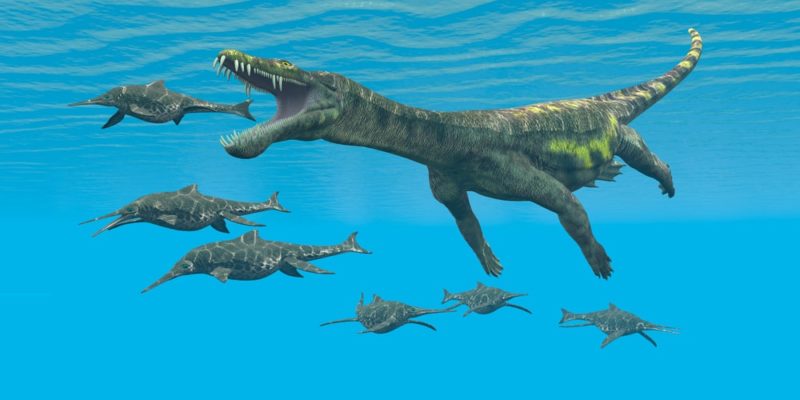
What was the Triassic Period?
The Triassic is the first period of the Mesozoic Era. It began 248 million years ago and ended 206 million years ago, spanning an estimated interval of 42 million years. Along with the two succeeding periods, Jurassic and Cretaceous, it constitutes the reign of the dinosaurs on Earth: the Triassic started in the wake of the great Permian-Triassic extinction event and ended with the Triassic-Jurassic mass extinction.
It is at the end of this period that continental drift began, causing Pangea, the single supercontinent of the time, to gradually drift apart. This process started to shape the continents as we know them today and form oceans and seas that did not exist until then, such as the Atlantic Ocean.
The climate of the Triassic Period was changing, as was the case throughout much of Earth’s geological history. During most of the period, the climate was warm and dry, but with the movement of the continents and the formation of large inland bodies of water, humidity began to increase.
The name Triassic derives from the term trias, which was coined by German geologist Friedrich August von Alberti (1795-1878). This term makes reference to the division of sedimentary rocks into three distinct parts, which Alberti identified in the Harz Mountains in central Germany in 1834.

- See also: Carboniferous Period
Characteristics of the Triassic Period
The main characteristics of the Triassic Period are:
- It began 248 million years ago and ended 206 million years ago.
- Dinosaurs first appeared in this geologic period.
- It started following the Permian-Triassic extinction event and ended with the Triassic-Jurassic mass extinction.
- The breakup of Pangea began in the final part of the period, the single supercontinent divided into Laurasia to the north and Gondwana to the south.
- The climate was cooler in Laurasia, while in Gondwana a warm, humid climate prevailed.
- Numerous archaeological sites are home to plant and animal fossils from this period.
Division of the Triassic Period
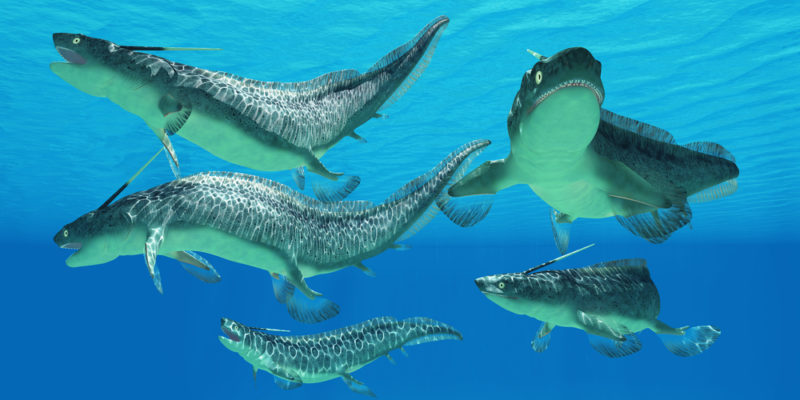
The Triassic is divided into three epochs or series comprising seven ages or stages:
- Lower or Early Triassic. It began about 251.9 million years ago and ended about 251.2 million years ago. It includes the Induan and Olenekian ages.
- Middle Triassic. It began around 247.2 million years ago and ended 242 million years ago. It encompasses the Anisian and Ladinian ages.
- Upper or Late Triassic. It began about 237 million years ago and ended 208.5 million years ago. It spans the Carnian, Norian, and Rhaetian ages.
Geology of the Triassic Period
At the start of the Triassic, the continents were conjoined, existing as a single supercontinent called Pangea. It was, in turn, divided into two major subcontinents: Laurasia to the north and Gondwana to the south. Pangea was surrounded by two seas during this period: Panthalassa, which occupied much of Earth's surface, and Tethys, in the interior of the continent.
Towards the end of the Triassic Period, Pangea showed the earliest signs of fragmentation. Tectonic forces from the Earth's upper mantle started to drift the continents, which also impacted the formation of oceans, seas, and sedimentary basins.
Climate of the Triassic Period
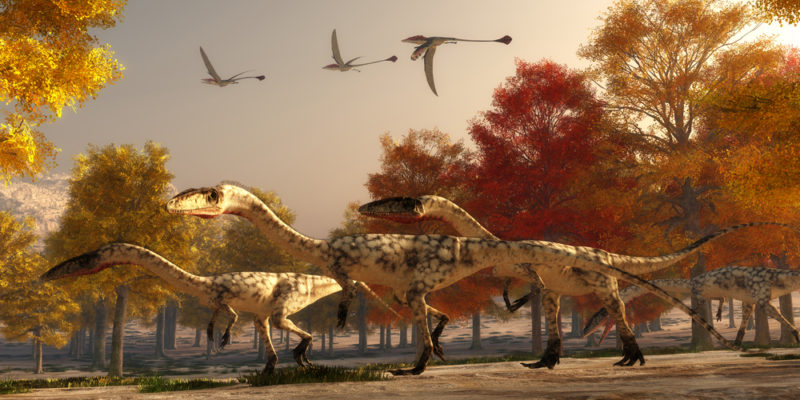
The climate during the Triassic Period was hot and dry. Due to the lack of humidity to regulate temperature, Pangea’s interior experienced extremely hot summers and very cold winters. In contrast, coastal areas close to the Thetis and Panthalassa seas had milder temperatures, with cool winters and temperate summers.
As a result, Pangea’s interior was covered with deserts and had extremely low humidity and rainfall, while in coastal areas, rainforests thrived.
The subcontinent Laurasia, comprising present-day North America, Europe and Asia, lay to the north far from the equator, and therefore had a cooler climate. Meanwhile, Gondwana, consisting of the current territories of South America, Africa, Oceania, Antarctica and the Indian Peninsula, stretched to the south and across equatorial latitudes, thus having a much warmer and more humid climate.
Since much of Pangea’s landmass was located far from the poles, no records of extremely low temperatures exist, and neither does evidence of glaciation dating from this period.
Flora and fauna of the Triassic Period
In terms of flora, ferns and palms dominated the warm regions of Gondwana during the early part of the Triassic, while coniferous plants flourished in the colder regions of Laurasia.
As for fauna, vertebrates spread in the continents and the first dinosaurs rose, though they would only come to dominate Earth in the succeeding period, the Jurassic.
Earth’s surface at the time was dominated by reptiles, while the seas were inhabited by nothosaurs and ichthyosaurs, which are similar to dolphins but over 33 feet (10 m) long. The first mammals also appeared during this period, though they did not spread until dinosaurs had become extinct.
Petrified forests of the Triassic Period
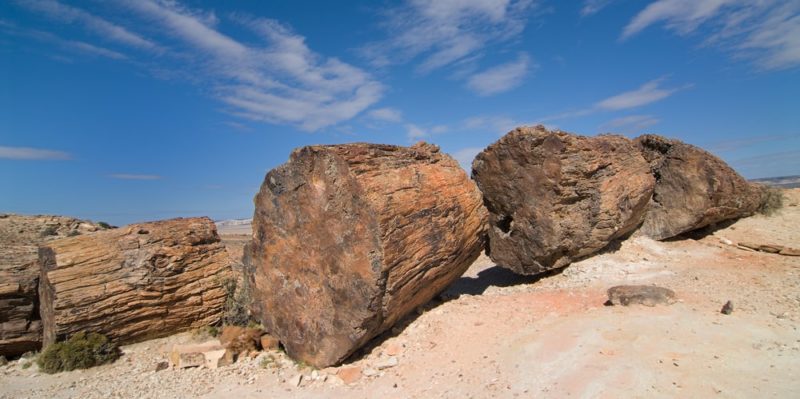
Petrified forests are archaeological sites of fossilized trees. For a tree to petrify, its entire organic matter must be gradually replaced by minerals, which makes its preservation possible. Today, a large number of trees from the Triassic Period are found in petrified forests.
An example of this is the Jaramillo Petrified Forest National Park in Santa Cruz, Argentina. This petrified forest from the Triassic Period consists of over 120 fossilized trunks of an evergreen subtropical forest.
Fossilized trees are also found in the petrified forest of Paramillos, in Mendoza Province, Argentina. This petrified forest formed during the Triassic was discovered by Charles Darwin in 1835, and is therefore known as "Darwin's forest".
Triassic-Jurassic mass extinction
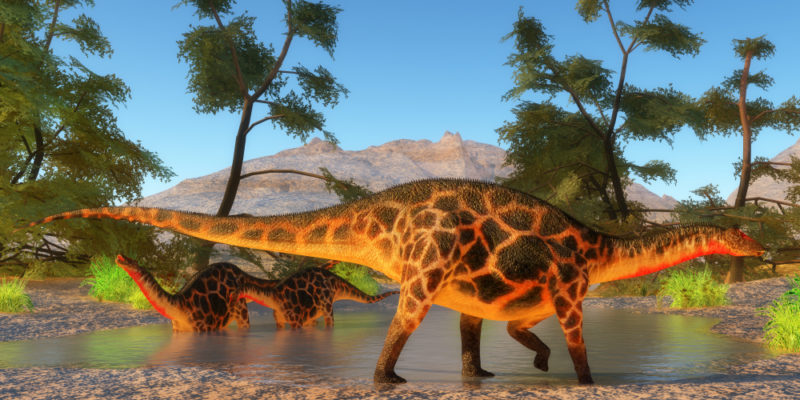
At the end of the Triassic, a mass extinction of land and marine species occurred. While it was not as large as that of the Late Permian Period, it is estimated that 20% of marine taxa, most archosaurs, therapsids, and large amphibians disappeared. This extinction favored the spread of dinosaurs in the Jurassic, since much of their ecosystemic competition died out during the mass extinction event.
As with the Permian-Triassic mass extinction, the causes of this event are unknown. Nevertheless, several hypotheses have been suggested:
- Massive volcanic activity during the period might have released extremely toxic substances like sulfur, which would have been responsible for the death of the species.
- Volcanic eruptions might have produced large amounts of ash, blocking sunlight and therefore heat, which would have caused the planet's temperature to plummet.
- The impact of an asteroid might have brought about dramatic changes in Earth’s atmosphere and surface dynamics.
- See also: Jurassic Period
Major sites of the Triassic Period
Some of the largest paleontological sites from the Triassic Period are found in:
- South Africa. Karoo and the Elliot Formation.
- Antarctica. Mount Kirkpatrick Formation.
- India. Maleri Formation.
- Australia. Knocklofty Formation and the Wianamatta Group.
- United States. Ghost Ranch (New Mexico) and the Lockatong Formation (New Jersey).
- Argentina. Ischigualasto Provincial Park (San Juan), Santa Cruz Province, and Uspallata (Mendoza).
- Brazil. Paleorrota (Rio Grande do Sul).
Explore next:
References
- Ferrando Castro, M. (2018). ¿Qué fue la extinción masiva del Triásico-Jurásico?. RedHistoria. https://redhistoria.com
- Pérez López, A. (2022). Triásico. Departamento de Estratigrafía y Paleontología. Universidad de Granada. https://wpd.ugr.es
- Tarbuck, E. y Lutgens, F. (2005). Ciencias de la Tierra. Una introducción a la geología física. Pearson Educación.
Was this information useful to you?
Yes NoThank you for visiting us :)